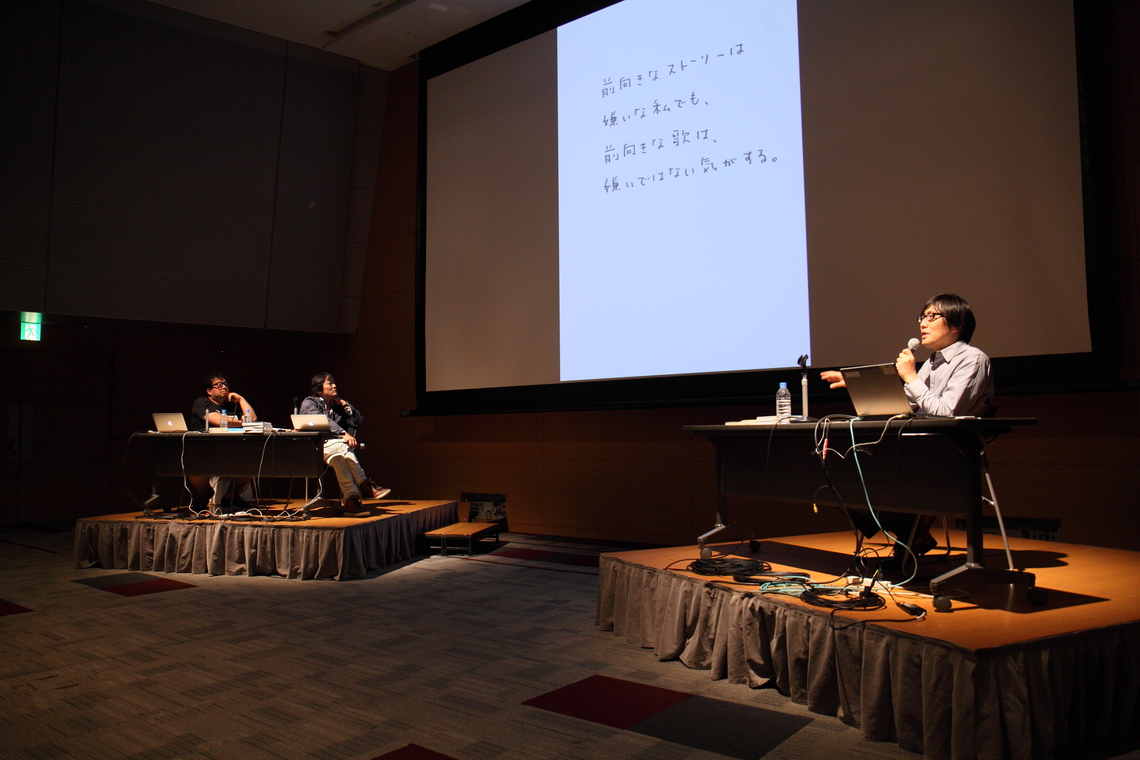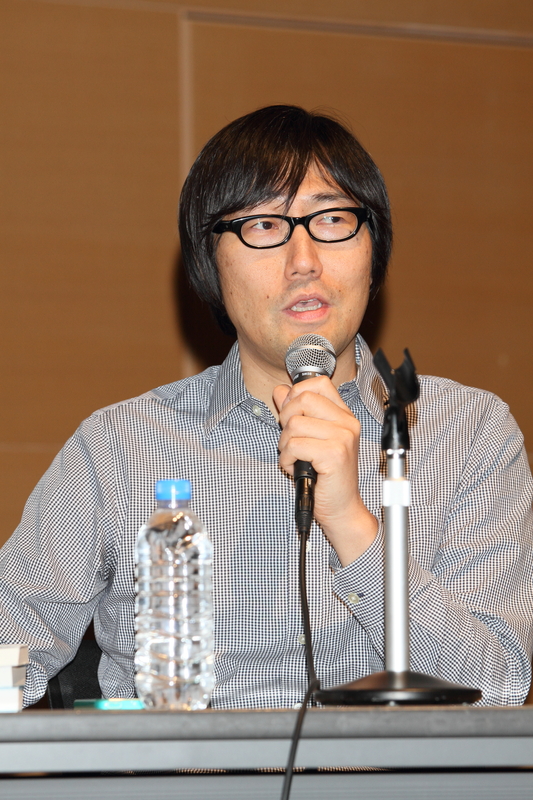Dentsu Inc. Design Talk #122, titled "A Deep Dive into 'Ideas and Presentations'," was held at Dentsu Hall on September 9th. It featured three creators: Kentaro Kimura from Hakuhodo Kettle, Toshiyuki Konishi from POOL, and Shinichi Fukusato from One Sky. We present the highlights of this three-hour talk live, packed with discoveries and insights, in two parts.

How do you generate ideas?
Fukusato: For some reason, all three of us speaking today have written books about ideas and presentations. Mr. Kimura wrote "Breakthrough: Inspiration Comes from Logic," Mr. Konishi wrote "Is It Getting Through?", and I published "The Planning Technique for the Type Who Watches from Behind the Telephone Pole" and "The Book of Ideas and Presentations for People in Trouble." While we share this commonality, as you can see from this venue layout, there's also a subtle divide (laughs). Kimura-san is strong internationally, has won numerous advertising awards, and serves as a judge. I, on the other hand, have consistently created commercials with a Japanese living room feel. In that sense, we're polar opposites. So, at Hakuhodo Kettle, which seems so cutting-edge, how do you typically develop ideas?
 |
|
Kimura: We call Kettle's meeting method "layered thinking." If someone pitches an idea and it gets dismissed, it's a bad idea. But if someone else jumps on it, like "That could work as PR, right?" or "We could make an app for that," then it's a good idea. It's like, "Let's only speak up when everyone's 'excitement meter' is rising!" Unlike meetings where you just bring ideas and pick one, or meetings where you tweak a single draft, the great thing is we can reach places we never imagined ourselves.
Konishi: POOL's meetings are similar, right? How about you, Fukusato?
Fukusato: I often send handwritten storyboards on paper or iPad notes via email. I rarely have meetings with multiple people. It feels pretty solitary. Speaking of meetings, back when I worked under Masahiko Sato, there was this famous "3-Minute Proposal" thing. Sato would set a timer for three minutes, and everyone present absolutely had to come up with an idea during that time. It could be a commercial idea, a new way to shoot product footage, a name—anything. If you hadn't thought of anything by the three minutes were up, it felt like everything ended right then, like you weren't human anymore... that kind of pressure. That's what I remembered. The difference from what Mr. Kimura mentioned, though, is that Mr. Sato would sometimes take a nap during the meeting. He'd come back about an hour later and present an amazing idea, saying, "How about this?" But whether that had anything to do with the ideas everyone brainstormed during the 3-minute session... well, no one really knew.
Kimura: That's pretty much wasted effort (laughs). Back when I was in marketing, I had experience endlessly pitching ideas too. I'd often get called in to famous CDs and told, "Give me some ideas!" I was happy, so I'd always come up with 100 or 200 ideas. But all I ever heard was "Thanks! Thanks!" and none of them ever got adopted. I told them, "I'm not contributing at all, am I?" And they replied, "Because you handle the first and second rounds, I can move on to the third round." It made me feel sad at the time, but now I totally get it. Because ideas in the first and second rounds rarely have that real leap. Konishi-kun, there was that story from back in the day about needing 1,000 ideas by the next day, right?
| |
 |
Konishi: Exactly. When I said I couldn't make a late-night meeting for personal reasons, he said, "I'll let you off, but you need 1,000 ideas by tomorrow." I said, "Got it!" But 1,000 ideas? That's tough. Around 400, my brain started to go haywire. I somehow managed to write 600 that day, then pushed hard the next day to get to 1,200. That's my personal best.
Fukusato: Do you still come up with hundreds of ideas when writing copy yourself?
Konishi: I don't have the stamina for hundreds anymore. But I still go through that process of thinking and thinking, "Is this it? No? Oh, was that it?" The copy I recently worked on for Toyota Motor, "Let's make it better," was presented as a single draft, but that's rare.
One copy becomes the framework for the entire project
Fukusato: Interestingly, all three of us here have worked on Toyota projects, so today is actually a Toyota showdown (laughs). The "Let's make it better." campaign you mentioned earlier was a project Kimura-san and Konishi-san worked on together, right?
Kimura: The brief was to enhance Toyota's image for safety and technology, and we wanted to convey the spirit of manufacturing that's in Toyota's DNA. President Akio Toyoda always says, "Let's build better cars." Toyota also has the keyword "Kaizen." We wondered if we could create a phrase that bridges the talk about cars and the talk about the company, something that could become a keyword for the times. When I mentioned this, Konishi-kun came to the next meeting with the copy "Let's make it better." Everyone present agreed immediately – this was it!
Konishi: Toyota's essence lies in its incredibly steady, step-by-step approach to building and changing things. This connects to a Japanese quality that can be shared with the world. This copy conveys that to society. I aim for phrases that are short and leave a spark within those who see or hear them. Considering that, this was the only possible choice.
 |
|
Fukusato: Copy really is crucial, isn't it? When the keyword "Let's make it better" emerged, the path forward suddenly became clear.
Konishi: Just like your Georgia "Tomorrow is another day," Fukusato. The words themselves become the frame. Without that phrase, the series might have lost its focus as it continued.
Fukusato: Right as we were facing the 21st century, I got the brief to shift from the 90s "comfort" approach to a "positive" direction. I thought it would be hard for someone not feeling positive to come up with a positive concept... but looking around, people were getting fired up watching "Project X," and Morning Musume's "LOVE Machine" was a hit. I realized that vibe was definitely out there. Positive songs become huge hits every few years, right? Taking a hint from that, I proposed using a positive song to create a positive commercial. I suggested rewriting Sakamoto Kyu's "Ashita ga Aru Sa" (There's Always Tomorrow) with lyrics reflecting the current social climate.
※The second part of the interview will be updated on Saturday, October 11.
You can also read the interviewhereon AdTie!
Planning & Production: Dentsu Inc. Human Resources Department, Aki Kanahara








